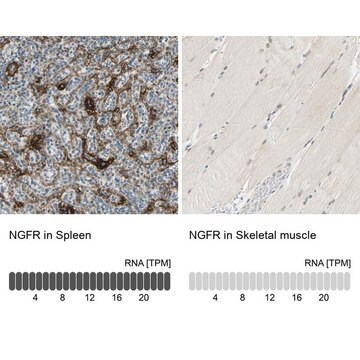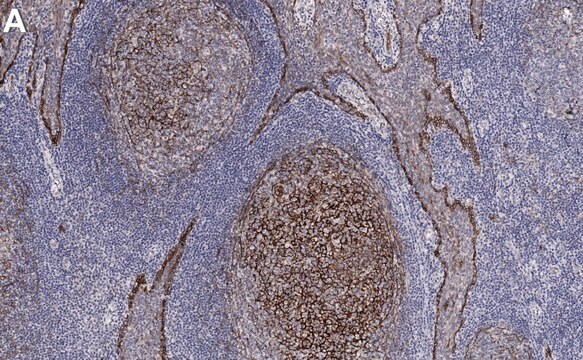AB1554
Anti-Nerve Growth Factor Receptor Antibody, p75
serum, Chemicon®
Synonym(s):
CD271 antigen, Low affinity neurotrophin receptor p75NTR, Low-affinity nerve growth factor receptor, NGF receptor, low affinity nerve growth factor receptor, nerve growth factor receptor, nerve growth factor receptor (TNFR superfamily, member 16), p75 IC
About This Item
Recommended Products
biological source
rabbit
Quality Level
antibody form
serum
antibody product type
primary antibodies
clone
polyclonal
species reactivity
mouse, rat, human
manufacturer/tradename
Chemicon®
technique(s)
immunocytochemistry: suitable
immunohistochemistry: suitable (paraffin)
immunoprecipitation (IP): suitable
NCBI accession no.
UniProt accession no.
shipped in
dry ice
target post-translational modification
unmodified
Gene Information
human ... NGFR(4804)
General description
Specificity
Immunogen
Application
1:500 - 1:5000 dilution of this antibody immunoprecipitated NGF Receptor p75 from 10 µg of PC12 cell lysate.
Immunohistochemistry(paraffin):
1:50 and 1:300 dilution from a previous lot detected NGF Receptor p75 using IHC-Select Detection with HRP-DAB.
Immunocytochemistry:
1:500 dilution from a previous lot detected NGF Receptor p75 in rat PC12 cells.
Neuroscience
Neurochemistry & Neurotrophins
Quality
Immunoprecipitation (IP): 1:500 - 1:5000 dilution of this antibody immunoprecipitated NGF Receptor p75 from 10 µg of PC12 cell lysate.
Target description
Linkage
Physical form
Storage and Stability
Analysis Note
Rat PC12 cells.
Other Notes
Legal Information
Disclaimer
Not finding the right product?
Try our Product Selector Tool.
Storage Class Code
10 - Combustible liquids
WGK
WGK 1
Certificates of Analysis (COA)
Search for Certificates of Analysis (COA) by entering the products Lot/Batch Number. Lot and Batch Numbers can be found on a product’s label following the words ‘Lot’ or ‘Batch’.
Already Own This Product?
Find documentation for the products that you have recently purchased in the Document Library.
Our team of scientists has experience in all areas of research including Life Science, Material Science, Chemical Synthesis, Chromatography, Analytical and many others.
Contact Technical Service






